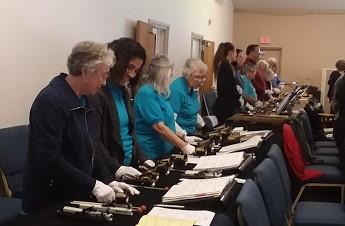The stained-glass windows in Orleans Cathedral, like those in many European cathedrals, told a story. It was surprisingly familiar, if unusual. The main character was a girl depicted responding to a supernatural call to defend her people in a time when doing so defied strictly defined gender roles. Her success then led to her capture, one-sided trial, and execution. Visiting the city last spring, I had forgotten how important St. Joan of Arc had been to Orleans’ history, and how important Orleans had been in Joan’s own story.
In October 1428, during the Hundred Years War, the English laid siege on Orleans. They had the upper hand, and had been moving gradually south. Their attack on Orleans had moved them one step further, and put Charles of Ponthieu, the French dauphin and heir to the throne, in a very bad position. France had no official king, and would have none until he could return to Reims to be crowned as Charles VII. Reims was to the north, and with the English surrounding Orleans, that was not an option.
It was during this siege that Joan of Arc gained enough confidence from the right people, including the dauphin, to warrant assigning her men from his army to help drive out the English. On May 8, 1429, the English left Orleans in response to Joan and her army. Her mission at Orleans was one of her first, and among her most decisive victories. The French have since remembered her victory here with one of her several titles, the Maid of Orleans. Thus Joan and Orleans are forever linked.
Joan herself was born a peasant in Domremy in January 1412. She began having visions and hearing voices at the age of twelve. First encouraging her in how to live well as a good and holy person, they would eventually tell her what must be done to save France, and that she was the one to do it. By the age of fifteen, she was persistent about responding to these voices and going to see the dauphin. Many of those around her viewed her wishes as ridiculous and dangerous, much as they might seem to people today. In an article, Catholic history writer James Martin writes, “Basically, [Joan] acts like a crazy young girl, hearing voices, leaving her family, going to war and dying for an unseen person.... To many people today, ... Joan would probably just seem crazy.” Somehow, though, Joan managed to convince those around her to listen, and they eventually gave in to her persistence.
Confidence from the future Charles VII was not immediate, either, although good first impressions helped. To better observe and test her when Joan first came to speak with him, Charles posed as an attendant, and dressed one of his men as himself. Accounts tell how Joan without hesitating walked up to the real dauphin and knelt before him. According to Joan, her visions had taught her to identify the dauphin even though she had never seen him. Even so, Charles wanted to further test her claims of divine guidance and had her speak with theologians for months before he assigned her the army she would lead to Orleans.
While Joan succeeded in gaining approval from Charles’ theologians, the English religious leaders eventually helped charge her a heretic, a charge that warranted death by burning. Later analysis of Joan’s hearings generally seem to agree that her trial was rigged by politicians who resented her successes for the French and saw her as a threat to the English. Even comments by English observers at the time—many of them silenced by those behind Joan’s trial—suggested that they, too, were aware of and regretted Joan’s treatment and the court’s verdict.
Joan is well loved by many who know her story today. She is admired for her courage, her persistence, and her determination to do what she believed to be right. At the same time, even she, like most of us, also had her moment of weakness. Near the end of her trial, she recanted in an attempt to avoid execution. And at the time, the English court indeed accepted her recantation in exchange for her life. But Joan knew herself and her beliefs well. Finding she could not continue as something other than what she was in spite of the chance it gave her to prolong her life, Joan took back her recantation. The English executed her the next day, on May 30, 1431. Joan was nineteen years old.



